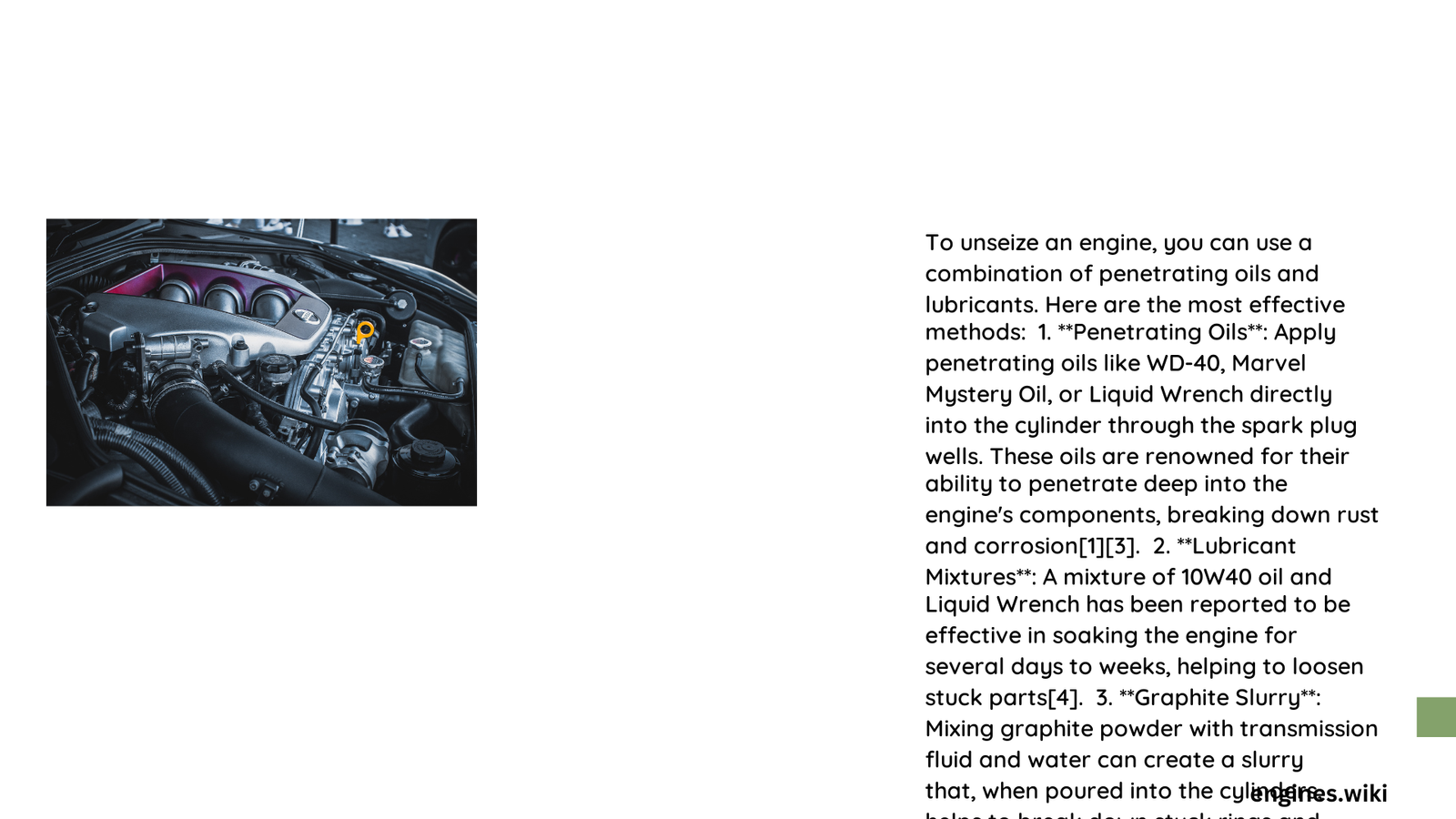When an engine seizes, it becomes a critical mechanical failure requiring precise intervention. Unseizing an engine demands a strategic approach involving specialized penetrating oils, careful heat application, and methodical mechanical techniques. Vehicle owners and mechanics must understand the nuanced process of freeing a locked engine without causing additional damage, utilizing targeted solutions that restore engine mobility and prevent complete mechanical breakdown.
What Penetrating Oils Work Best for Unseizing?
Top Penetrating Oil Recommendations
| Brand | Effectiveness | Application Method |
|---|---|---|
| Kroil Original | High | Aerosol/Drip Bottle |
| WD-40 Specialist | Moderate-High | Precision Spray |
| Liquid Wrench L106 | High | Direct Application |
Penetrating oils serve as the primary solution for unseizing an engine. These specialized lubricants penetrate microscopic spaces, dissolving rust and reducing friction between seized components. Key characteristics include:
- Low Viscosity: Allows deep penetration into tight spaces
- Rust Dissolving Properties: Breaks down oxidation and corrosion
- Lubrication Capability: Reduces friction during manual rotation
How to Apply Penetrating Oil Effectively?
Application Techniques
- Clean the engine surface thoroughly
- Apply penetrating oil generously
- Allow extended soak time (24-48 hours recommended)
- Use multiple application cycles
What Heat Methods Help Unseize an Engine?

Safe Heat Application Strategies
Heat can significantly assist in unseizing an engine when applied correctly. Critical considerations include:
- Temperature Range: 200°F to 300°F (93°C to 149°C)
- Heating Tools: Propane or MAPP gas torch
- Safety Precautions:
- Wear protective gear
- Ensure proper ventilation
- Avoid direct flame contact with components
How to Manually Rotate a Seized Engine?
Mechanical Rotation Techniques
Mechanical intervention requires careful, controlled force:
- Recommended Tools:
- Breaker bar
- Long-handled wrench
- Hydraulic press (for extreme cases)
Rotation Guidelines
- Apply gradual, consistent pressure
- Avoid sudden, aggressive movements
- Monitor resistance carefully
What Additional Strategies Enhance Unseizing?
Complementary Techniques
- Chemical Penetrants
- 50/50 ATF-Acetone mixture
-
Specialized rust-dissolving compounds
-
Mechanical Vibration
- Gentle tapping around seized components
- Use rubber mallet for controlled impact
Potential Risks and Precautions
Warning Signs of Irreparable Damage
- Excessive resistance during rotation
- Grinding or metallic sounds
- Visual signs of severe internal damage
Pro Tip: If manual techniques fail, consult a professional mechanic to prevent catastrophic engine failure.
Maintenance Prevention
Future Seizure Prevention
- Regular oil changes
- Proper lubrication
- Monitor engine temperature
- Address minor issues promptly
Final Recommendations
- Patience is crucial during unseizing process
- Use high-quality penetrating oils
- Follow systematic approach
- Know when professional intervention is necessary
Note: Each engine presents unique challenges. Techniques may vary based on specific mechanical conditions.
Technical Complexity Scale
| Difficulty Level | Recommended Action |
|---|---|
| Low | DIY Techniques |
| Moderate | Professional Consultation |
| High | Complete Engine Rebuild |
References:
– https://www.kroil.com/go/the-best-penetrating-oil-for-every-job/
– https://www.youtube.com/watch?v=QS9yCg0Rtdw
– https://www.youtube.com/watch?v=xUEob2oAKVs
